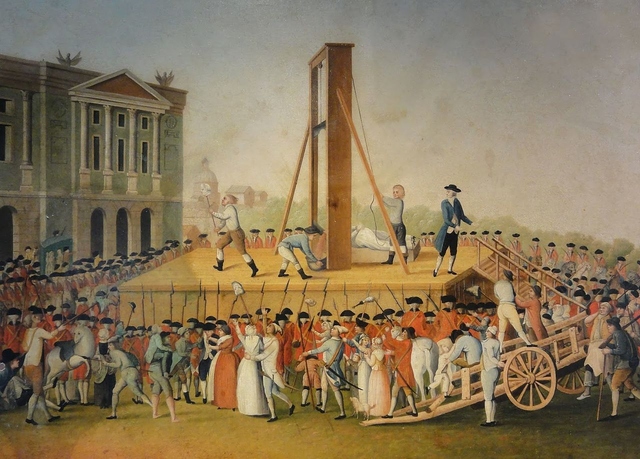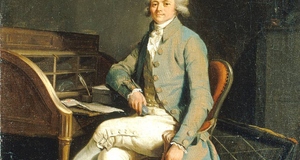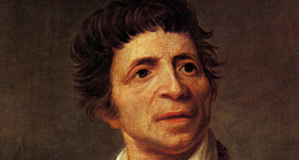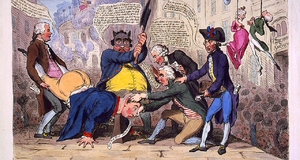Degrees of Violence in the French Revolution
By
2010, Vol. 2 No. 01 | pg. 1/1
KEYWORDS:
The French Revolution marks a stain in history, notorious for one of the bloodiest periods in modern civilization. Whether this infamous violence existed at the birth of the Revolution or only during the Terror has been the topic of debate between scholars since the 1980s.1 François Furet challenges the previous “theory of circumstances” claiming that the violence, which existed during “The Terror,” existed at the birth of the Revolution.2 Violence was predicted even before tensions peaked in France, and undeniably was existent during the beginning stages of the Revolution. Circumstances also heightened the level of violence, which occurred from 1793-1794. Therefore, both theories hold validity, yet the question remains: were there warning signs to this violence before the Revolution even began? One document, “Paris Scenes,” written by Louis Sébastien Mercier before 1789, foreshadowed the violence which was to come to Paris. During the Revolution Mercier served as a deputy of the Convention and was connected to the Girondins.3 Within the document Mercier describes the state of Paris, he describes the Parisians as “a fighting race.” 4 He discussed the peasant riots and draws constant comparisons to the British, illustrating his belief in their stable political system thus illustrating how unstable the Parisians themselves were becoming. “…[A]nd their violence would be the more cruel, since they lack in themselves all power to control it.” 5 Throughout this publication, Mercier’s comparison of Paris in the 1780s to England’s Revolution acknowledges some of the hindrances involving the Parisians. “ Nor have we settled in our minds the difference between disturbance and revolution.” 6 This evidence supports Furet’s case and even further implies that this aggression existed even before the Revolution technically began.Painting depicting the execution by guillotine of Marie Antoinette in 1793 at the Place de la Révolution. There are also instances at the brink of Revolution and in the beginning that implied that there would be a violent element to this movement. Storming the Bastille on July 14th 1789, which some scholars consider the start of the Revolution, exhibits erratic and violent behavior. 7 Sylvia Neely explains the ambiance of the time before the actual fall of the Bastille, “The government feared this urban population could easily turn to violence…” 8 Another factor of this violence was the guards located in Paris were involved with the common people, thus enabling riots and violent behavior.9 During the taking of the Bastille some were killed, yet even more brutal the head of the commander of the garrison was placed on a pike and displayed with pride.10 The Bastille became representation of revolutionary ideals and the Revolution itself. 11 Paris workers based this symbol of the Revolution on sadistic acts, again illustrating the violence that would consistently be exhibited throughout the duration of the Revolution, once again supporting Furet’s argument. Before the Bastille the Réveillon riots were cited as chaotic, so violent acts were not unexpected, yet the volume of violence was increasing as the Revolution progressed. There were numerous acts of violence preceding the Terror; the March to Versailles, The Champ de Mars, the slave revolts in Haiti, the September Massacres of 1792, the War at the Vendée, the execution of “Louis Capet,” and the revolt in Lyon. These are just some of the more famous events listed, and these events are all prior to the notorious Terror. Important figures were also falling victim to these acts of violence; many important figureheads were assassinated or executed before September 5, 1793. Marat and King Louis XVI were all killed before the Terror technically began. There is no question to thar this violence, by the guillotine or by revolt, existed everywhere from 1789-1793. Furet’s argument that violence existed in the beginning of the Revolution is not only valid; he actually underestimates the role of the violence that was existent even before the official start to the Revolution. Even though this violence was foreshadowed before the Revolution, the “thesis of circumstances” still holds importance. Unlike the beginning of the Revolution, when the “working people” were executing these acts of violence, the Terror was violent acts from the top-down. Through early reflections of the Revolution, the responsibility for the Terror rests on Robespierre, yet newer analysis claims there were many more involved.12 The Committee of Public Safety was feeling pressure from the San Culottes, as well as a pandemic of paranoia, which swept through Paris. This paranoia was based on the fear that there were hidden enemies of the Revolution that were conspiring to put the Revolution to the end. 13 This paranoia enabled the Committee to serve as a dictator thus causing the massive casualties that history reflects on as the Terror.14 Neely explains in regards to institutions like the Committee, “..the Terror was to be expected because the goals of the Revolution from the beginning rejected the past and created totally new (an untested) institutions.” 15 These factors, along with others such as the War in with Europe, the economy, and the struggle with religion, all played a part in the growing tensions within France, which allowed the existing violence to escalate into the period known as the Terror. 16 This violence defines the French Revolution in its entirety; it is not confined to the Reign of Terror. The violence that occurred in France during the late 18th century was consistent in the sense of its presence, and as time progressed and circumstances changed the violence amplified. This positive correlation acknowledges both the previous theories that circumstances affected the events of the Terror, and that the Terror did exist at the beginning of the Revolution. A new argument suggests there were even hints before the Revolution began that it would be bloodier than any revolution to date. Edmund Burke’s prediction of what was to come of France was written in his publication Reflections on the Revolution in France, which was published before the Terror.17 Neely explains Burke’s warnings, “…he foresaw the violent nature of the Revolution … he had a simple explanation for what was going wrong.” 18 There was no ambiguity to the nature of the Revolution from beginning to end: bloodshed was called for by the people, and later called for by those in power. Although a change in circumstances altered the degree of violence, that violence existed for the entirety of the French Revolution. ReferencesMercier, Louis Sébastien. “Paris Scenes.” The Waiting City: Paris 1782-1788. Quoted in Laura Mason and Tracey Rizzo, The French Revolution: A Document Collection. Boston: Houghton Mifflin Company, 1999. Neely, Sylvia. A Concise History of the French Revolution. Plymouth: Rowman and Littlefield Publishers Inc, 2008. Endnotes1.) Sylvia Neely, A Concise History of the French Revolution, (Plymouth: Rowman and Littlefield Publishers Inc, 2008), 217. 2.) Neely, 217. 3.) Louis Sébastien Mercier, “Paris Scenes.” The Waiting City: Paris 1782-1788, Quoted in Laura Mason and Tracey Rizzo, The French Revolution: A Document Collection, (Boston: Houghton Mifflin Company, 1999), 46. 4.) Mercier, 48. 5.) Mercier, 47. 6.) Ibid 7.) Neely, 73. 8.) Ibid, 72. 9.) Ibid, 74. 10.) Ibid, 75. 11.) Ibid, 74. 12.) Ibid, 219. 13.) Ibid, 217. 14.) Ibid, 207. 15.) Ibid, 217. 16.) Ibid 195-197. 17.) Ibid, 217. 18.) Ibid Suggested Reading from Inquiries Journal
Inquiries Journal provides undergraduate and graduate students around the world a platform for the wide dissemination of academic work over a range of core disciplines. Representing the work of students from hundreds of institutions around the globe, Inquiries Journal's large database of academic articles is completely free. Learn more | Blog | Submit Latest in History |

















